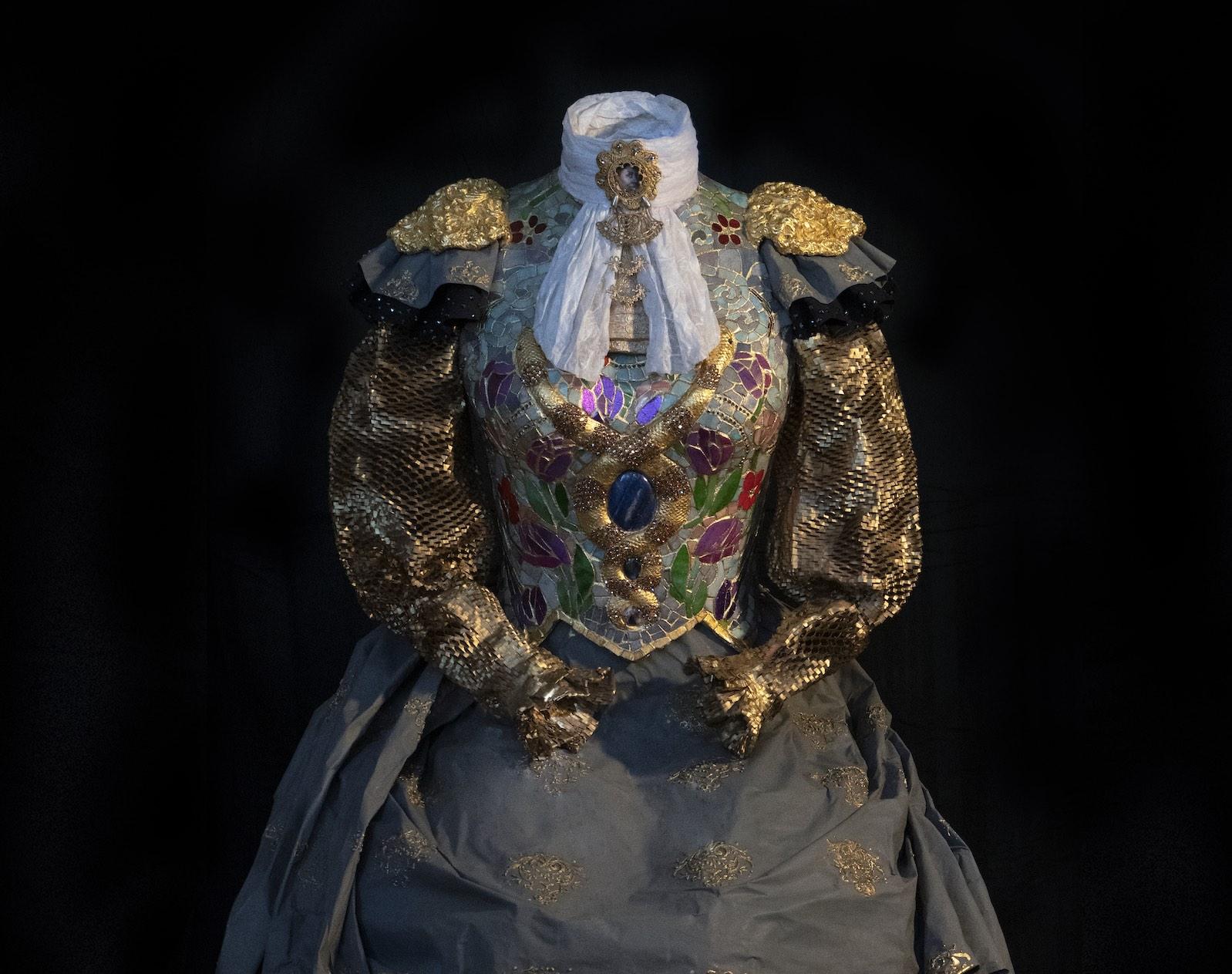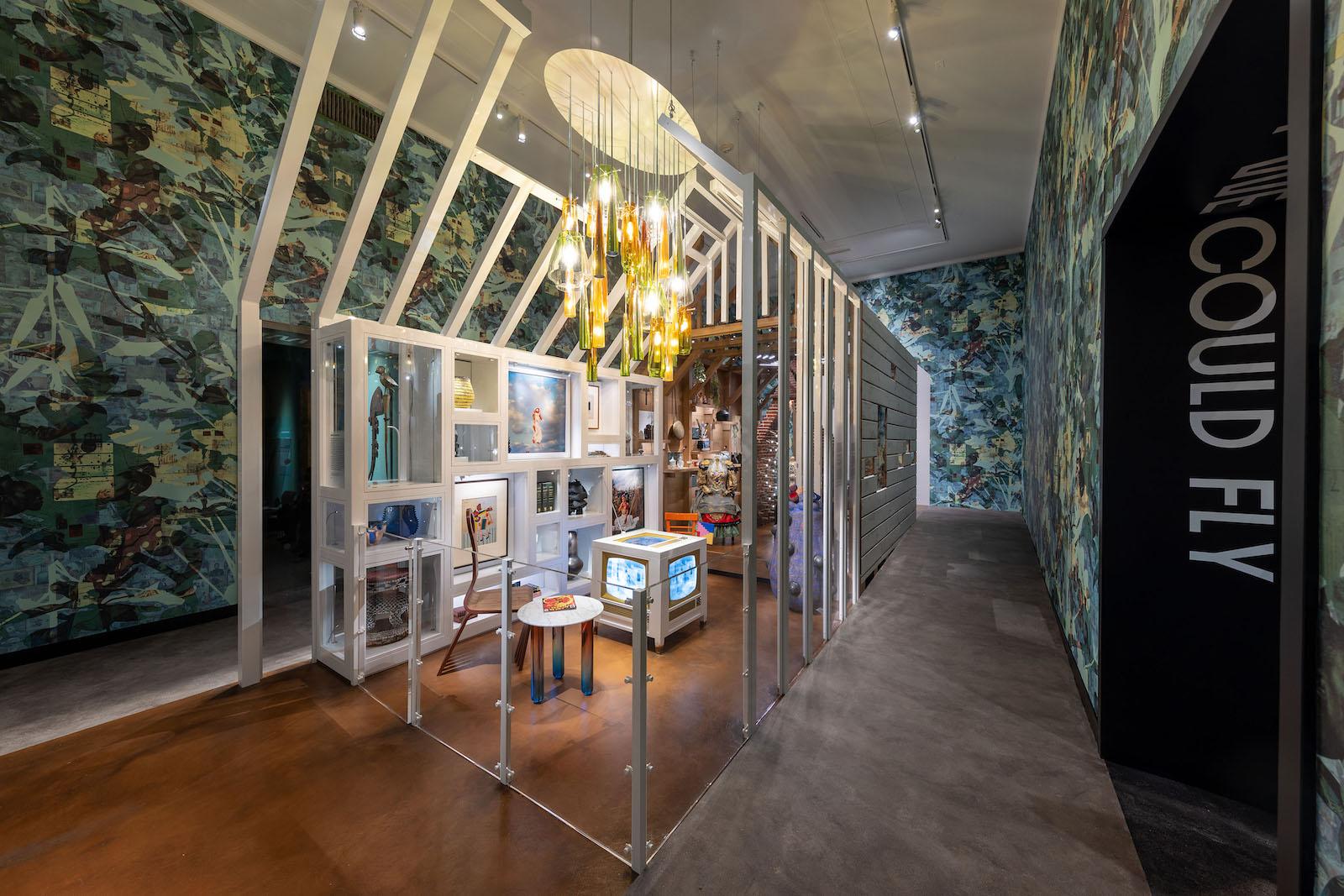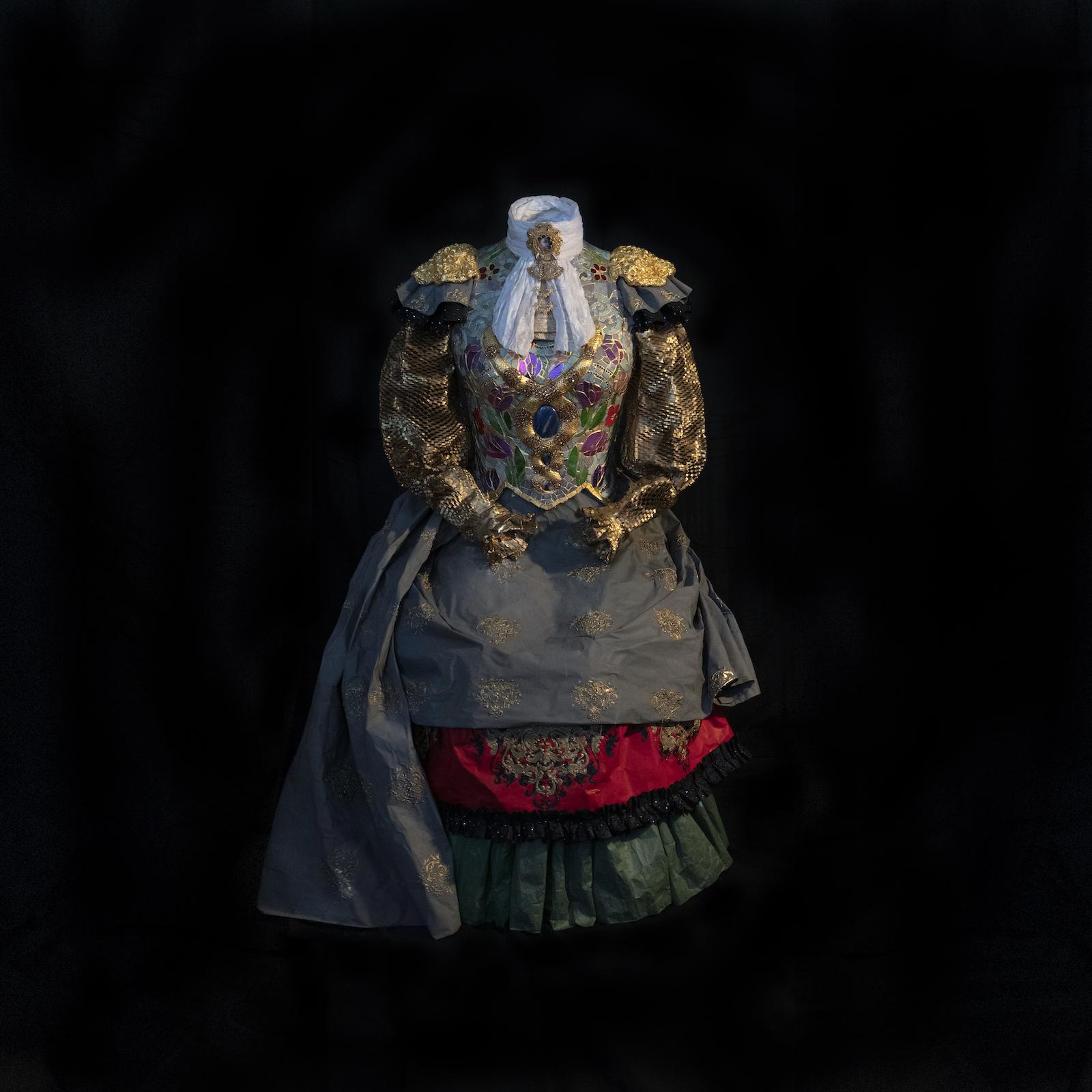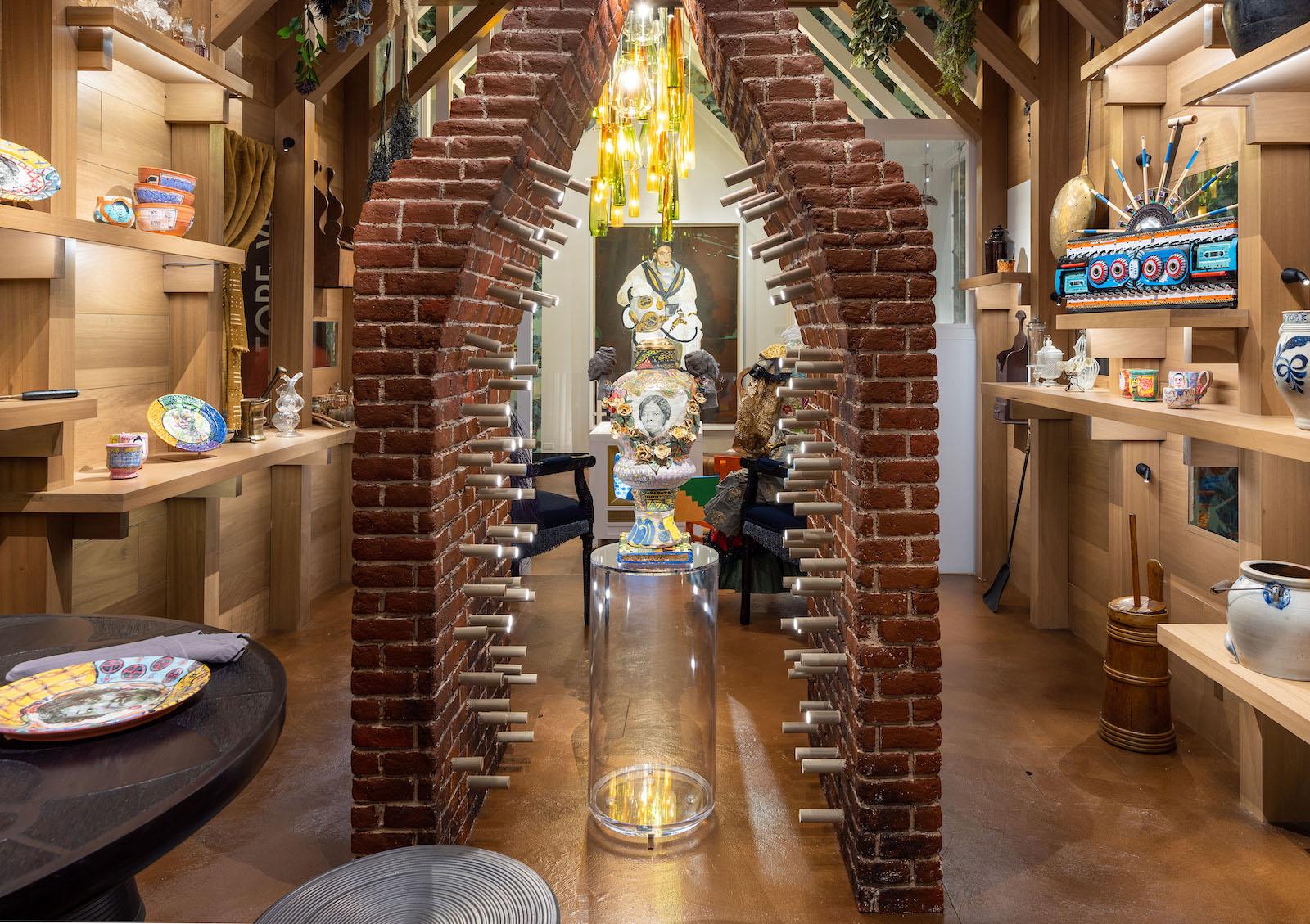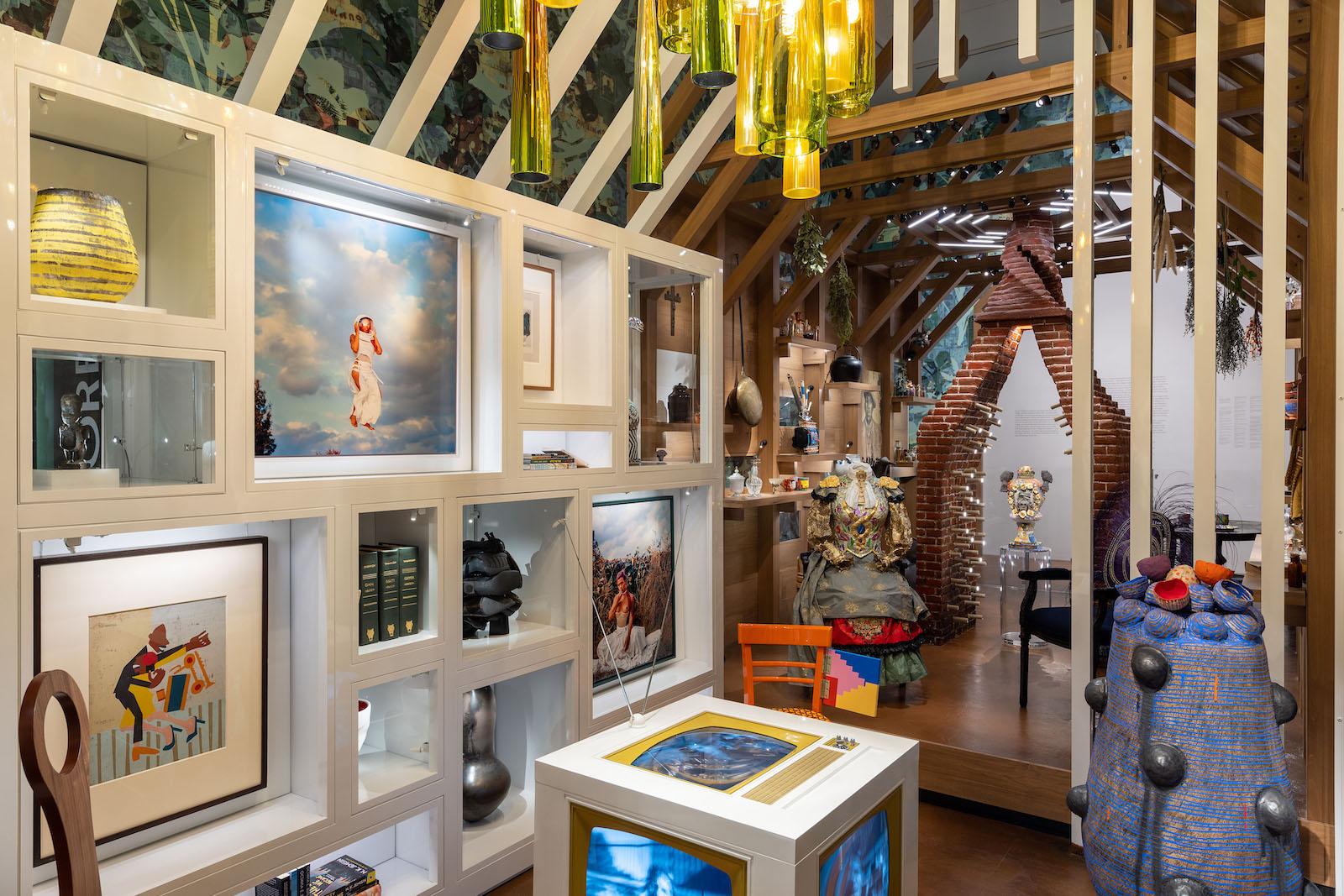Encompassing past, present, and future, the exhibition creates an Afrofuturistic example of a Seneca Villager’s home, if the Village had not been destroyed to build Central Park, a first step in remediating the harm caused by past erasures and destructions of African American history and culture.
“I wanted to create something that spoke to my Haitianness, ” Jean-Louis says about her breathtaking couture sculpture, Justice of Ezili. Calling on the legacy of Haitian voodoo, Jean-Louis crafted a dress for the loa Ezili Dantor. Jean-Louis says Loa are spirits who “help people to connect or to communicate with the Almighty God.” A fierce protector, Ezili Dantor is associated with motherhood, justice, and vengeance. “This dress really was a call to arms,” Jean-Louis says. Embodying Ezili’s spirit, “It’s a dress of war or armor. I was imagining what a queen, a Black woman, might wear if she was going into war.”




